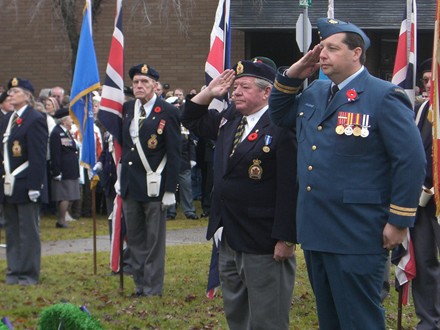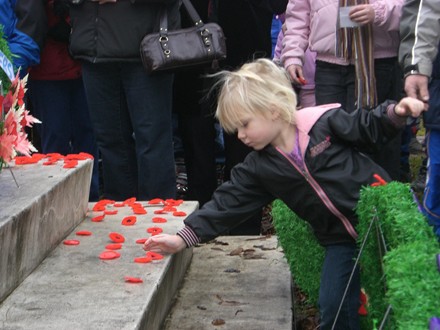Cenotaph Services Draw Two Thousand
By 250 News
Tuesday, November 11, 2008 01:31 PM
A child leans forward to place a poppy on the steps of the Cenotaph

(click on video icon for a video of some of the events)
In addition to wreaths being laid on behalf of the Federal government, Veterans Affairs and the Provincial Government, there were wreaths for Matthew McCully, the Corporal who died in Afghanistan in May of 2007, the Legion and on behalf of the City of Prince George. ( at right, Mayor Colin Kinsley salutes after placing a wreath)
Following the sombre ceremony, people who attended came forward to place their poppies on the steps of the Cenotaph at the feet of the Honour Guard.
Below are some images of those who took part in the ceremony:



Previous Story - Next Story
Return to Home










I am so proud that my daughter, who is a senior cadet, volunteered and performed cenotaph duty. My son was part of the honor guard as well for the cenotaph ceremony.
I do have one concern about these proceedings.
Each year it seems that the RCMP have a stronger presence in the event. Not just traffic control or security, but as full participants.
Why?
I do not recall the RCMP being involved in any war on foreign soil. So, by definition are not and cannot be called military veterans.
Granted they serve the country, but they are not war veterans. Remembrance day is for war and military veterans.
I do not want to take away any pride of duty nor do I suggest that the RCMP members are not appreciated, but they are not veterans and their participation, especially at the cenotaph, takes away from the real actual war and military veterans.
Is our armed forces so scarce now that we have need to add the civil security forces to participate?